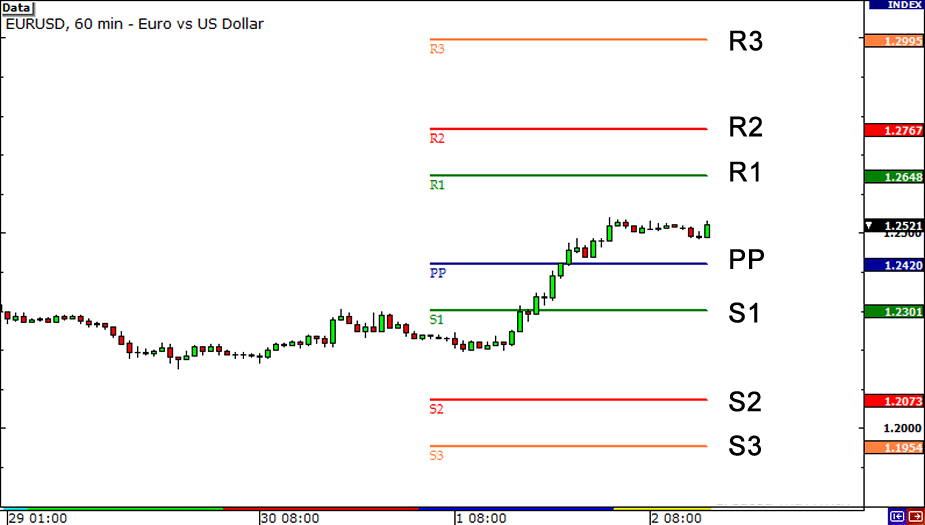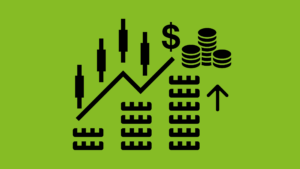In the fast-paced world of trading, identifying potential support and resistance levels is crucial for making informed decisions. Pivot points, a technical analysis tool, offer a valuable method to achieve this. By leveraging historical price data, pivot points provide traders with a framework to anticipate where prices might find buying and selling interest, impacting their direction.
Understanding Pivot Points
A pivot point itself is a calculated value based on the previous trading day’s high, low, and closing prices. The core formula is:
- Pivot Point (PP) = (High + Low + Close) / 3
This average price serves as a central reference point. However, the true power of pivot points lies in the additional support and resistance levels derived from the pivot point calculation. These are denoted as:
- Support Levels: S1, S2, S3
- Resistance Levels: R1, R2, R3
These levels are calculated using various formulas, with common ones being:
- Support 1 (S1) = (2 * PP) – High
- Resistance 1 (R1) = (2 * PP) – Low
Several online calculators and trading platforms can automate these calculations, making it convenient for traders to utilize pivot points.
Interpreting Pivot Points for Support and Resistance
Once you have the pivot point and its corresponding support and resistance levels, you can interpret them to gauge potential price movements:
- Price Above Pivot Point (PP): This suggests a bullish bias in the market. Prices might encounter resistance at R1, R2, and R3 levels. If the price breaks above these levels, it could signal a continuation of the uptrend.
- Price Below Pivot Point (PP): This indicates a bearish sentiment. Support might be found at S1, S2, and S3 levels. A price breaking below these levels could suggest a further downtrend.
Important Note: Pivot points are not guarantees of future price movements. They simply indicate areas where buying and selling pressure might be concentrated.
Beyond Basic Interpretation: Advanced Strategies with Pivot Points
While the basic interpretation provides valuable insights, pivot points can be used in more nuanced ways:
- Identifying Trend Direction: The overall market trend can be gauged by the price’s position relative to the pivot point. A sustained move above the pivot point suggests a bullish trend, while a consistent move below indicates a bearish trend.
- Price Targets: Pivot point levels can be used as potential price targets for entry and exit points. For instance, a trader might buy if the price breaks above a resistance level (R1) and set a profit target at the next resistance level (R2).
- Stop-Loss Placement: Support and resistance levels can be used strategically to place stop-loss orders. A stop-loss is an order that automatically sells an asset if the price falls below a certain level, limiting potential losses. By placing a stop-loss order near a support level, a trader can minimize losses if the price breaks through that support.
- Confirmation with Other Indicators: Pivot points are most effective when used in conjunction with other technical indicators like moving averages or relative strength index (RSI). Combining these tools can provide a more comprehensive picture of potential support and resistance zones.
Advantages of Using Pivot Points
- Simplicity: The calculations are relatively straightforward, making them accessible to both new and experienced traders.
- Objectivity: Pivot points are based on pure price data, removing subjective bias from the analysis.
- Versatility: They can be applied to various markets and timeframes, offering flexibility for different trading styles.
- Early Warning Signs: Pivot points can highlight potential turning points in the market, allowing traders to adjust their positions accordingly.
Limitations of Pivot Points
- Self-Fulfilling Prophecy: If enough traders rely on pivot points, their trading behavior can create support and resistance at those levels, potentially becoming a self-fulfilling prophecy.
- Static Levels: Pivot points are based on past data and don’t account for unforeseen news events or market shifts.
- False Signals: Breakouts above or below pivot point levels can sometimes be false signals, leading to losing trades.
- Not a Standalone Tool: Pivot points are best used as one piece of the puzzle, alongside other technical analysis tools and fundamental analysis.
Bottom Line
Pivot points offer a valuable tool for traders to identify potential support and resistance levels. By understanding their calculation, interpretation, and limitations, traders can incorporate pivot points into their trading strategies to make more informed decisions. However, it’s crucial to remember that pivot points are not a crystal ball. They should be used in conjunction with other analysis methods and proper risk management practices for successful trading.
Let’s Manage Your Forex Funds With Fx Pips Guru!
Fx Pips Guru is a forex fund management company managing client’s funds based on monthly profit share. Let’s do Live Chat with our experts.




